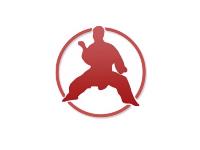Recently, I had the privilege—and the humbling experience—of practicing push hands with Master Chen during one of his seminars. To call the session “enlightening” would be an understatement; it was more like having reality reassembled before my eyes.
To put my bewilderment into context, let me introduce myself. I am a lifelong martial arts enthusiast with over thirty years of practice. Over the years, I’ve had the fortune of meeting founders of different styles, training alongside world-class martial artists, and even crossing paths with international-level athletes. My journey has been peppered with jaw-dropping feats of strength, impossible displays of skill, and techniques so exquisite they stand as the pinnacle of their respective styles. If martial arts were a pub quiz category, I’d be a champion—I either know about a style firsthand, have researched it, or at least have a passing awareness of it.
A couple of years ago, a friend introduced me to Master Chen and the Practical Method. I was intrigued by its underlying theory and the structured approach to training. Over multiple seminars, I gradually immersed myself in it.
Then came my recent encounter with Master Chen himself. It started off smoothly—well, smoothly for him. He was generous, effortlessly tossing me out with his movements, the kind of casual dominance that makes you question your life choices. As I grew more comfortable, I decided to employ some of my old tricks—subtle finesse techniques: a slight wrist turn to trap his hand, a hip check to set up a throw, a sly leg trip. To my absolute shock, none of them worked. Mildly irritated, I switched strategies, opting for brute force—rushing in for a takedown, adding more speed, more strength. The result? The same. No matter what I tried, I was unceremoniously bounced away like a misbehaving pinball.
This sent me into a bout of introspection. It wasn’t the failure itself that troubled me—I’ve met plenty of martial artists who could counter my techniques. Normally, I can dissect what went wrong and tweak my approach—adjust my speed, strength, or angle accordingly. But my encounter with Master Chen was different. I saw no technique. I felt no technique. One moment I was connected to him, the next I was flung into oblivion. It was absurd.
I tested push hands with other Taiji practitioners, hoping to replicate that feeling of emptiness, but nothing came close. I shared my confusion with others who had sparred with Master Chen, hoping they could articulate his secret. They could not.
Frustrated, I finally confronted Master Chen himself. “What is this uniqueness? How do I unlock this Taiji secret?”
He smiled and replied, “I don’t have techniques. I only rotate.”
Grandmaster Hong writes:
法不離圓, The method does not depart from circles,
旁求徒勞。 Other methods are futile.
Master Chen embodied these principles with striking clarity.
In 2014, I gave it another shot, dedicating a year to intense training between workshops. That effort allowed me to witness Master Chen’s legendary “eye of the tiger” firsthand. You can read my full account 2014 Ottawa Open House.



{ 2 comments… read them below or add one }
hahaha love it. thanks for sharing.
Good sharing. “Only rotate” is great. That is why I love to study Taiji.